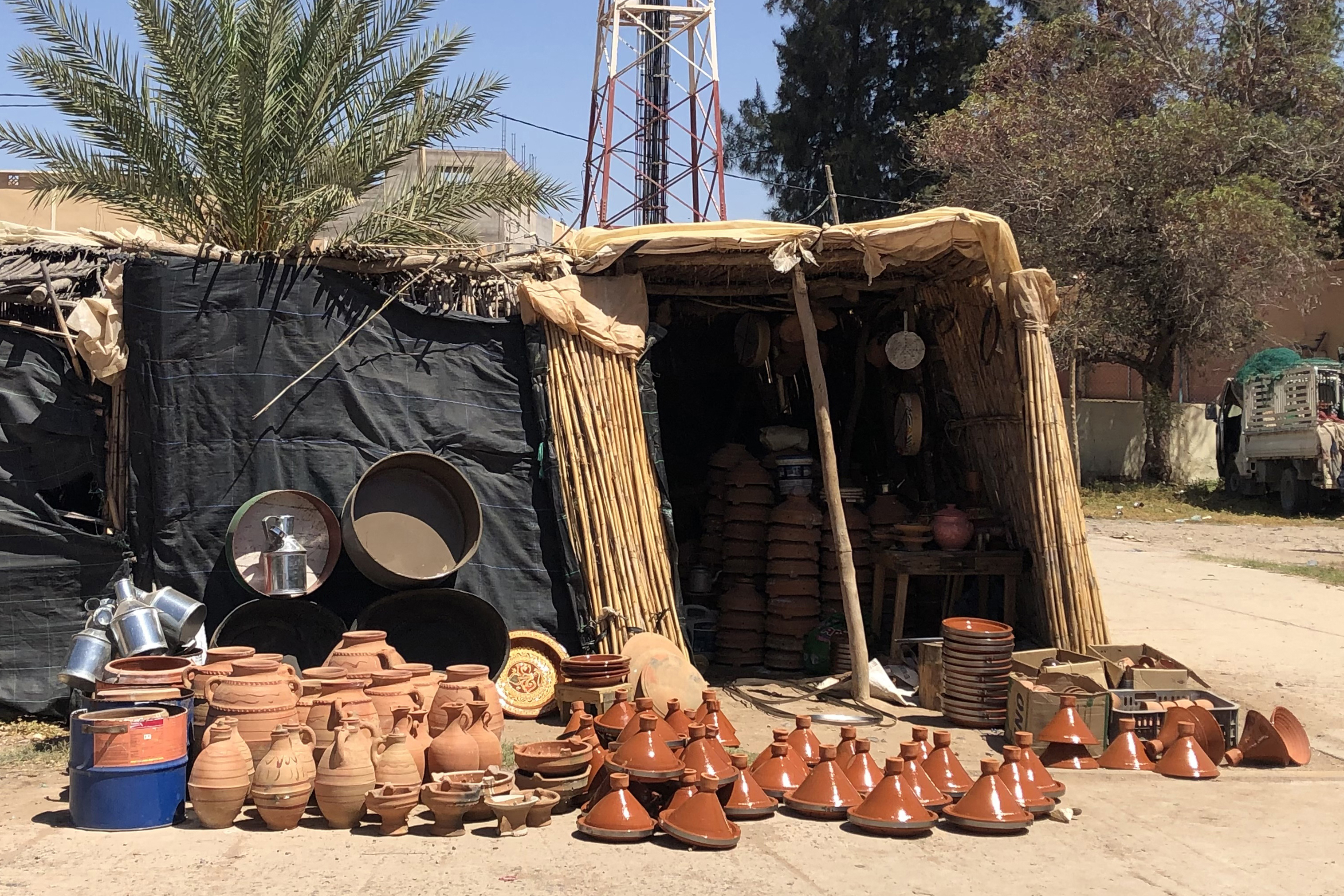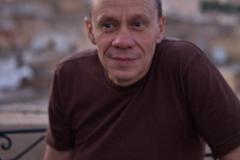The Weekly Souk
 After waiting for Ramadan to end to leave Marrakech, the first stop in the search for local ceramics was the town of Tarandout, often considered a hidden gem with its perfect orange medina walls – a contrast that is even more noted after the brashness of Marrakech. It is in the fertile Souss River valley and surrounded by much agriculture and economic abundance. In the hotel, the conversation began with our plans for the day. When I announced that we were going to the weekly souk or "bazaar," in Arazane, there was some questioning, at least judging by the looks we received. Tourists do not go to Arazane for any reason! Another bias I would encounter is the fact that the ceramics I was seeking – rural, unglazed, red clay functional wares – were not considered significant, that they were just "used by country people." Many people are familiar with the glazed ceramics, both historical and those made for tourists, from the larger pottery centers such as Fez, Safi, and Tamegroute, but not the rural red clay.
After waiting for Ramadan to end to leave Marrakech, the first stop in the search for local ceramics was the town of Tarandout, often considered a hidden gem with its perfect orange medina walls – a contrast that is even more noted after the brashness of Marrakech. It is in the fertile Souss River valley and surrounded by much agriculture and economic abundance. In the hotel, the conversation began with our plans for the day. When I announced that we were going to the weekly souk or "bazaar," in Arazane, there was some questioning, at least judging by the looks we received. Tourists do not go to Arazane for any reason! Another bias I would encounter is the fact that the ceramics I was seeking – rural, unglazed, red clay functional wares – were not considered significant, that they were just "used by country people." Many people are familiar with the glazed ceramics, both historical and those made for tourists, from the larger pottery centers such as Fez, Safi, and Tamegroute, but not the rural red clay.
After driving for approximately forty minutes, we pulled into the town of Arazane and immediately found the souk in a section directly bordering the main road, which was not hard to find. The souks have a combination of permanent vendors and those that are just in town for the day, a pattern repeated in all the souks we visited. One permanent stall on the edge of the souk, a dry goods store, had both ceramic bowls for breadmaking and water jars with simple decorations of red iron oxide on red clay.

